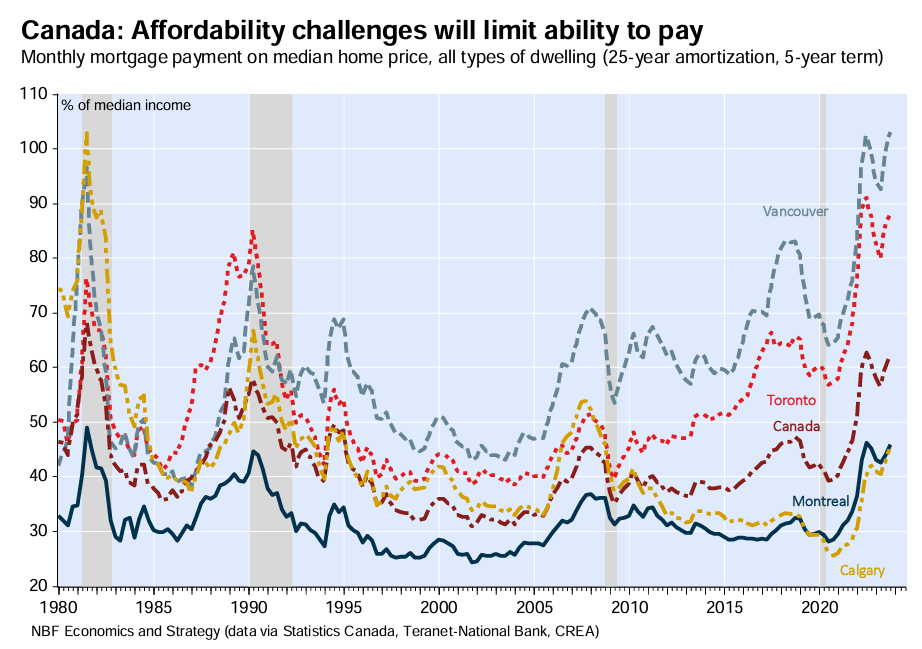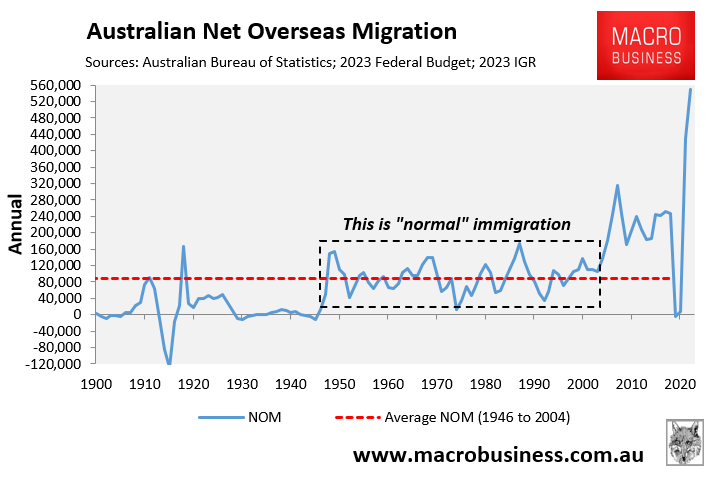ABC business editor Michael Janda has done a good job debunking the myth that significantly densifying Australia’s cities with high-rise apartments will result in affordable housing.
Janda references CoreLogic research showing that “our cities have densified considerably over the past two decades, long before YIMBYs clamoured for it”.
“Nationally, our capitals are squeezing 40% more people into the same land area than they were in 2003”.
“That’s against a 35% increase in population over the same period”.
“So, despite a brief exodus to the regions during COVID-19, all of our population growth and then some has gone into our major cities”, Janda writes.
The average block sizes of new homes have also shrunk considerably over the past two decades.
Janda then argues that the supply-only approach of the extreme YIMBYs is unlikely to result in cheaper housing.
“[Extreme] YIMBYism advocates a totally supply-side response favoured by sections of the orthodox economics community which take demand as a given and therefore see more output as the only solution whenever prices rise”, Janda says.
“But, when it comes to housing, supply can never keep up if demand expands unchecked, either through high levels of population growth or policies that encourage the existing population to consume more”.
ANZ chief economist Richard Yetsenga argues that experience suggests relying solely on new home building and increased density to fix the housing affordability challenge is “slow and complex” and “unlikely to affect the supply-demand balance in a timely manner”.
“A supply-first housing-affordability strategy is unlikely to result in cheaper dwellings,” he writes.
“The cost of new builds is critical to this strategy because the marginal price of new builds must inevitably be linked to the price of existing dwellings.
“If existing dwellings are cheaper than new ones (allowing for some consumer preference), new build commencements will dry up.
“New supply either won’t be sustained or prices of existing dwellings will rise. Either way, the affordability challenge is unlikely to be meaningfully addressed.”
One only needs to look at Vancouver Canada to see why YIMBYs’ supply-only solution will fail.
Vancouver literally transformed itself into a high-rise city, tripling its housing through infill:

As Patrick Condon pointed out, housing affordability in Vancouver worsened:
“This giant surge of new housing supply did not lead to more affordable housing as we all hoped. Somehow, confoundingly, the reverse happened”, Condon wrote.
“During this period, Vancouver housing prices quadrupled, rising faster and further than in any other North American centre city”.
“Currently, Vancouver home prices are North America’s highest and the third-most expensive globally (behind only Hong Kong and Sydney)”.
“Vancouver-area wages have stayed stubbornly flat (inflation-adjusted) while housing prices (also inflation-adjusted) have climbed by 400%”, he said.
Vancouver continues to plaster itself with high-rise apartments:


Yet, Vancouver is ranked among the most unaffordable housing markets in the world when it comes to prices:

Vancouver also has the highest rents in Canada:

That’s hardly a glowing endorsement of YIMBYism or a fantastic outcome if housing affordability is your goal.
Put simply, don’t be like Vancouver. Reduce immigration to sensible and sustainable levels instead:

Net overseas migration must be lowered to a level below the nation’s capacity to build housing and infrastructure.
Otherwise, the housing shortage will become permanent, locking young Australians out of homes to purchase or rent.

